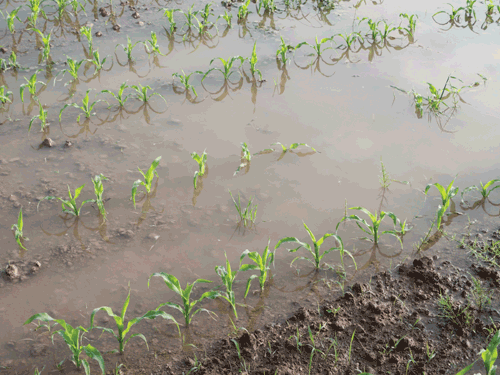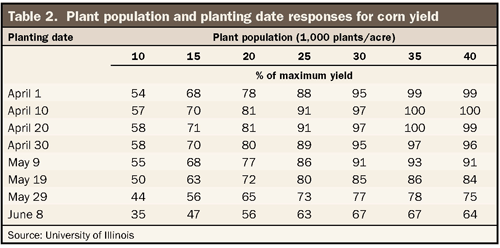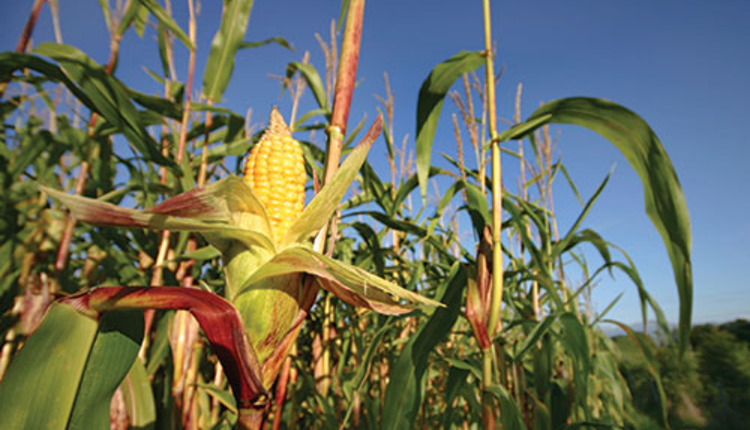Mahanna is with DuPont Pioneer and an adjunct professor at Iowa State University; Thomas is retired from the William H. Miner Agricultural Research Institute and president of Oak Point Agronomics Ltd.

The replant window for corn can be quite narrow. Even though corn is a crucial ration ingredient, as the growing season progresses the decision to plant another crop instead of corn may make better sense.

It may seem a bit premature to be discussing replant decisions in February, but having this information at your fingertips come April or May could alleviate considerable frustration. The current lack of feed inventory in many geographies coupled with the high price of grain makes replant decisions more critical than ever.


Click here to return to the Crops & Forages E-Sources
Corn can face many different stresses capable of reducing stands, such as cold, wet or flooded soils, bird or insect feeding, hail or even a spring frost. In cases of severe stand reduction, growers will need to determine if replanting will be more profitable than sticking with the current crop.
Assessing the stand
The first step in a replant decision is assessing the current stand by evaluating the number of lost or injured plants. For hail or spring frost events, it is best to wait a few days to allow time to see how plants recover. In cases of early season flooding, corn prior to the V5-V6 growth stage can survive for two to four days in saturated soils.
However, warm temperatures can shorten this survival time to only 24 hours. Also evaluate stand uniformity . . . such as frequent long gaps in the rows. An uneven stand will yield less than a relatively even stand with the same number of plants.
Stand counts should be taken randomly across the entire area being considered for replant. The accuracy of stand estimates logically improve with the number of locations sampled. The accepted method of stand counts is to sample one one-thousandth of an acre (Table 1). Measure off the distance appropriate for the row width, count the number of live plants and multiply by 1,000 to obtain an estimate of plants per acre.

How are plants doing?
Once you've determined the surviving plant stand, check the health of the plants. Plants that are severely injured or defoliated will be poor doers due to reduced photosynthetic capability and result in a lower yield. Also, check if the plant tissue at the growing point is a healthy white or cream color with normal texture.
For evaluating frost damage to corn plants 6 inches or less in height, use a knife to cut some frosted plants off about 1 inch above the soil. If the plant is still alive, you will see the new growth in a matter of hours, certainly within one day. The center of the cut plant grows the fastest, so you will observe a pyramid shape where just hours before there was a flat cut surface.
On a positive note, weed control is typically improved with later plantings due to tillage effects on germinated weeds and improved seedling vigor due to warmer soils. On the flip side, later plantings may incur more feeding from second-generation corn borers and silk feeding by rootworm beetles.
Once a stand has been evaluated, the expected yield can be compared to expected replant yield (Table 2). In general, the table shows that Midwest corn yield potential goes up with greater stand populations until the optimum of 35,000 plants per acre. Likewise it declines with planting dates later than April 20 and earlier than April 10 based on University of Illinois research.

Other factors such as fuel, labor, equipment, previous weed control applications, seed cost, availability and cost of feed alternatives, insurance compensation and average first frost dates need to be factored into whether replanting will result in an economically sound decision. Land grant universities are a good source of recommended maturity of corn hybrids for different planting dates across relative maturity zones.
If there's a delay
If replanting is delayed past a reasonable time for corn to mature, it may be more economical to consider soybeans (after June 1 in Wisconsin for example) or forage sorghum, sudangrass or sorghum-sudan crosses which can be planted into July.
As with all cropping decisions, working with your seed sales professional or consulting agronomist will help bring a clearer picture to any replant decision. That conversation will need to include a frank discussion about your farm's feed inventory and future needs.
130210_95











